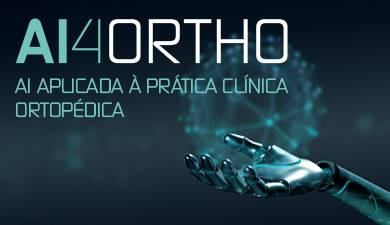Doctor Javier Gallego
Cardiothoracic Surgeon

Screening and Surgery in Aortic Valve Stenosis
HPA Magazine 11
Aortic Valve Stenosis is one of the most common heart diseases in the elderly population, the main problem being tightening of the aortic valve. It usually has a slow and asymptomatic evolution. However, in its advanced stages this condition progresses rapidly and is associated to approximately 50% mortality two years after the onset of the first symptoms or 50% after one year when symptoms related to heart failure coexist.
What is Aortic Stenosis?
With the aging process, the aortic valve becomes progressively more rigid, often calcified, which makes it difficult to open completely and therefore creates an obstacle for blood passing through the heart to the rest of the body. Typical symptoms of aortic stenosis are fatigue and/or shortness of breath, angina (chest pain) or syncope (fainting). This disease can often evolve symptom free, but when the first symptoms are felt, evolution is usually fast and if not treated the patient’s survival rate does not exceed two or three years.
Which population group is most affected by this disease?
Aortic Valve Stenosis is one of the most frequent heart diseases in the elderly population. It is estimated that over 300,000 people worldwide suffer from this condition. In Portugal it affects more than 30,000 people. This number will tend to increase due to the predictability of population aging. Often this pathology is poorly diagnosed, but affects 2% of the population over 65 years of age, 3% over 75 and reaches 4% in people over 85 years of age.
How can Aortic Valve Stenosis be diagnosed?
The diagnosis of this pathology is made by non-invasive methods such as the Transthoracic Echocardiogram. An examination performed by modern non-invasive imaging that can, in a few minutes diagnose the disease even before the onset of symptoms.
Who can benefit from a screening appointment?
People who want to make a complete cardiovascular evaluation or wish to exclude an aortic valve disease, even when there are no symptoms present. Any patient over the age of 65 may request an echocardiographic exam to rule out alterations in any one of his heart valves.
What are the causes of Aortic Valve Stenosis?
Problems related to the aortic valve are due to congenital alterations, rheumatic fever, infections or even degenerative issues associated to the ageing process. In Europe aging is the most frequent cause for people over 70.
What is the treatment?
When a severe Aortic Valve Stenosis is diagnosed, the patient should be referred to a "Valvular Heart Team”, who will decide on best strategy possible, with a view to solving the problem.
There is no medication that can minimise or treat Aortic Valve Stenosis. Once the aortic valve tightens causing a mechanical obstacle in the passage of blood from the heart to the rest of the body it must be treated, and the valve replaced by prosthesis. Nowadays surgery is still the most appropriate treatment in solving this problem; technical evolution has meant that the surgical procedure is now minimally invasive, resulting in a quicker and less painful recovery for the patient.
In recent years a catheter aortic valve replacement technique was developed, the TAVI (Transcatheter Aortic Valve Implantation). This intervention has had an enormous evolution and the cases with indication for this technique have become increasingly frequent with excellent results.
At the HPA Health Group the Cardiology Intervention Team and the Cardiothoracic Surgical Team work together in as a "Heart Team", from the initial diagnosis to the decision as to what treatment is most appropriate for each patient.
What are the risks and the recovery of the treatment of Aortic Valve Stenosis?
The risks associated with this procedure are relatively low, lower than the disease itself when left without treatment. Due to the natural evolution of the technical team the risks tend to become still lower.
Recovery is usually very quick and in uncomplicated cases there is the possibility of discharge the day after a TAVI intervention. On average 4 days hospital admission is advisable in cases of minimally invasive surgery.
The HPA Health Group intends to be a Centre of Excellence in the diagnosis and treatment of this pathology, as due to the high prevalence of aortic stenosis in the elderly population an early diagnosis and timely treatment will result in the improvement of the patients’ quality of life.
The Cardiothoracic Surgical Team has exponentially developed its activity. In 2018 the number of cases was triple compared to the average number of previous years, which also include emergency situations. As far as Thoracic Surgery is concerned, the increase has also been significant, especially in lung cancer surgery, through minimally invasive techniques, namely by single-port thoracoscopy.
This success and growth is due to several factors: the support of other specialties such as General Surgery, Pulmonology, and Specialists in Intensive Care and of course Cardiology, but also the ever-present Team of Physiotherapists, who accompany all patients in the post-operative care. Whenever possible, the Team of Physiotherapists begin treating the patient in the preoperative period, enabling the patient to undergo surgery substantially improved, resulting in a complete recovery.
Thranscatheter Aortic Valve Implantation

Expanded Valve

Compressed Valve









